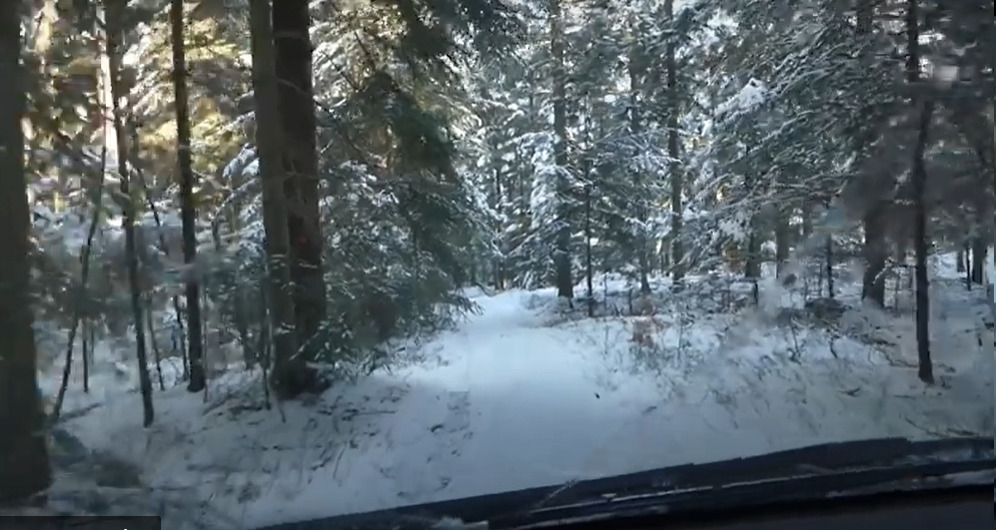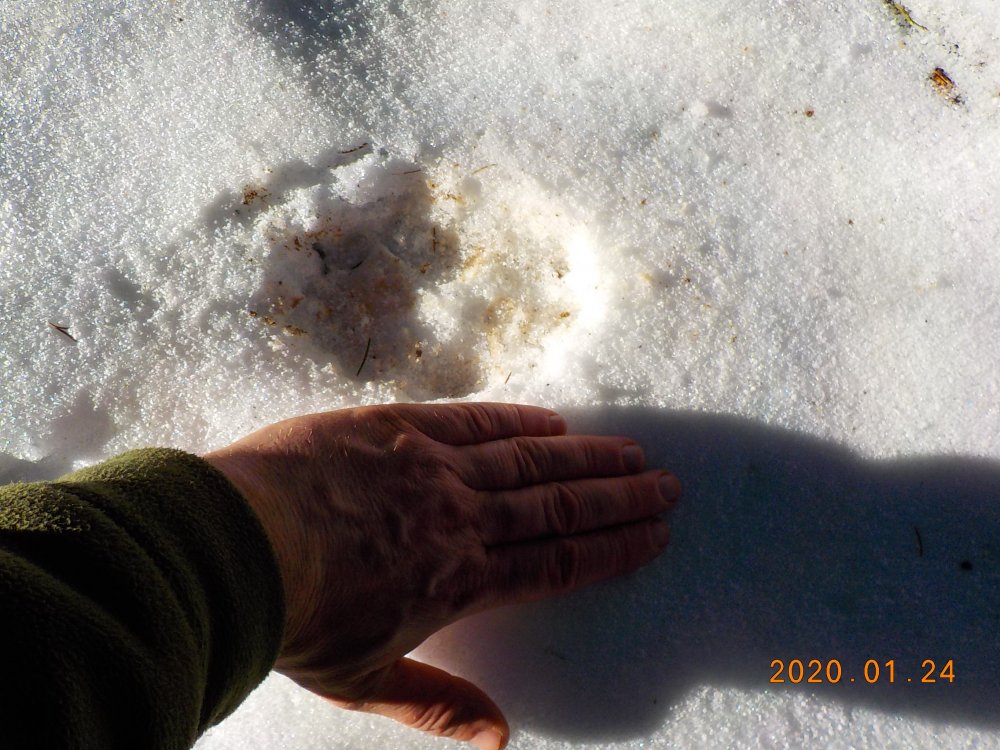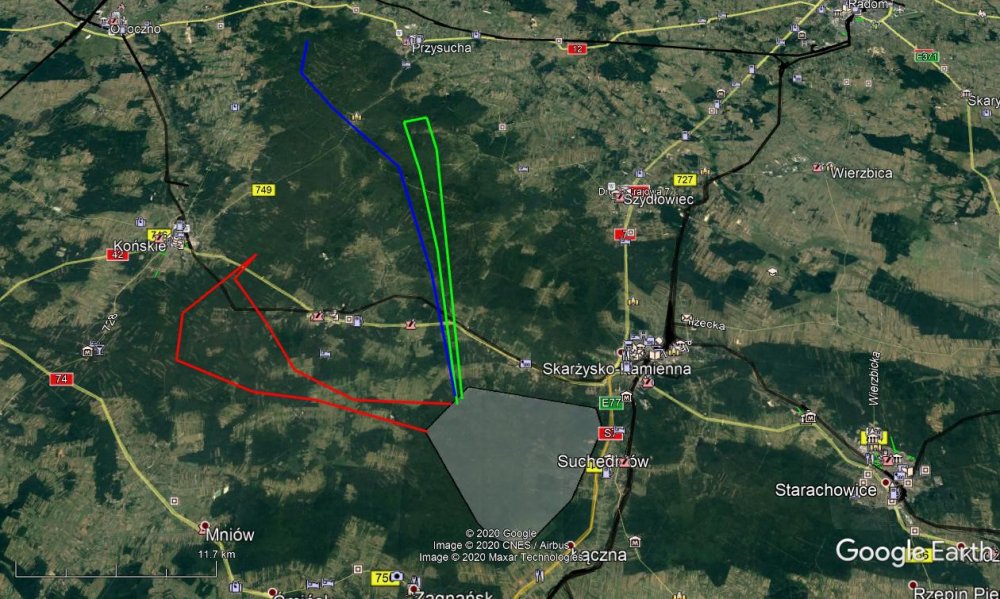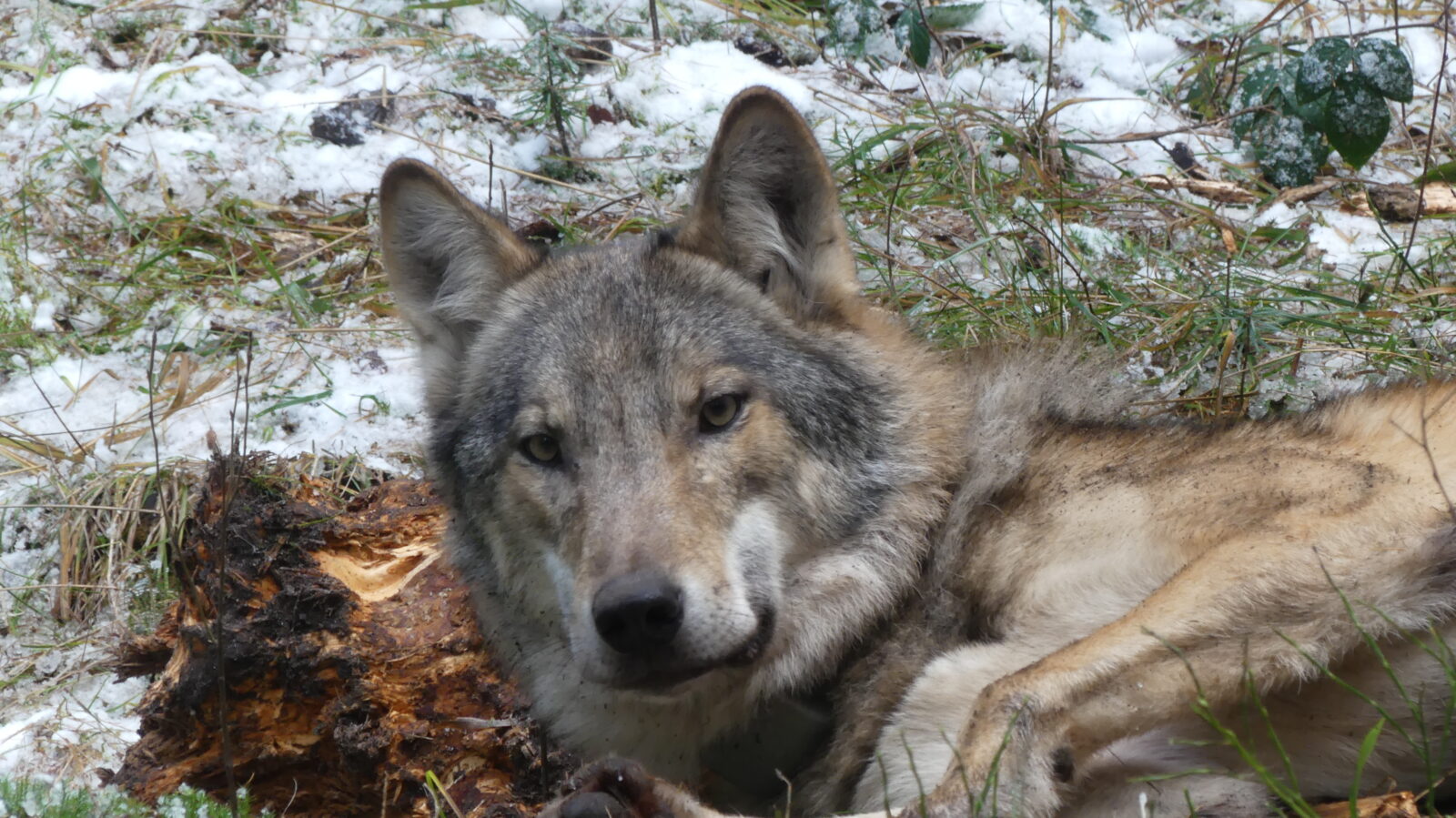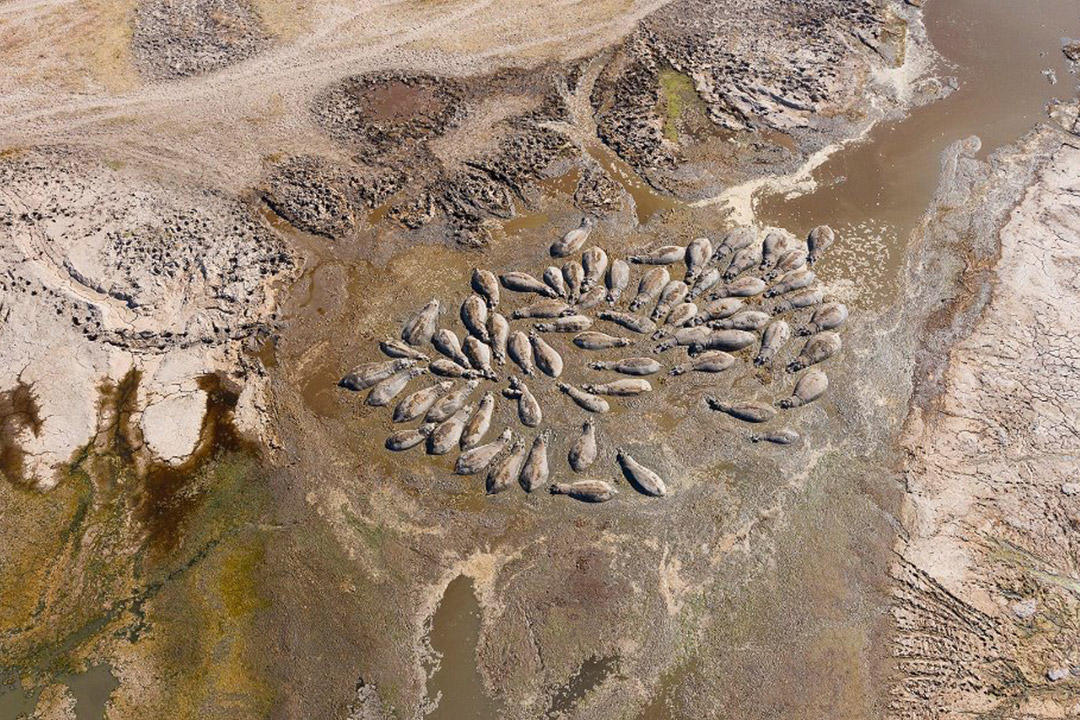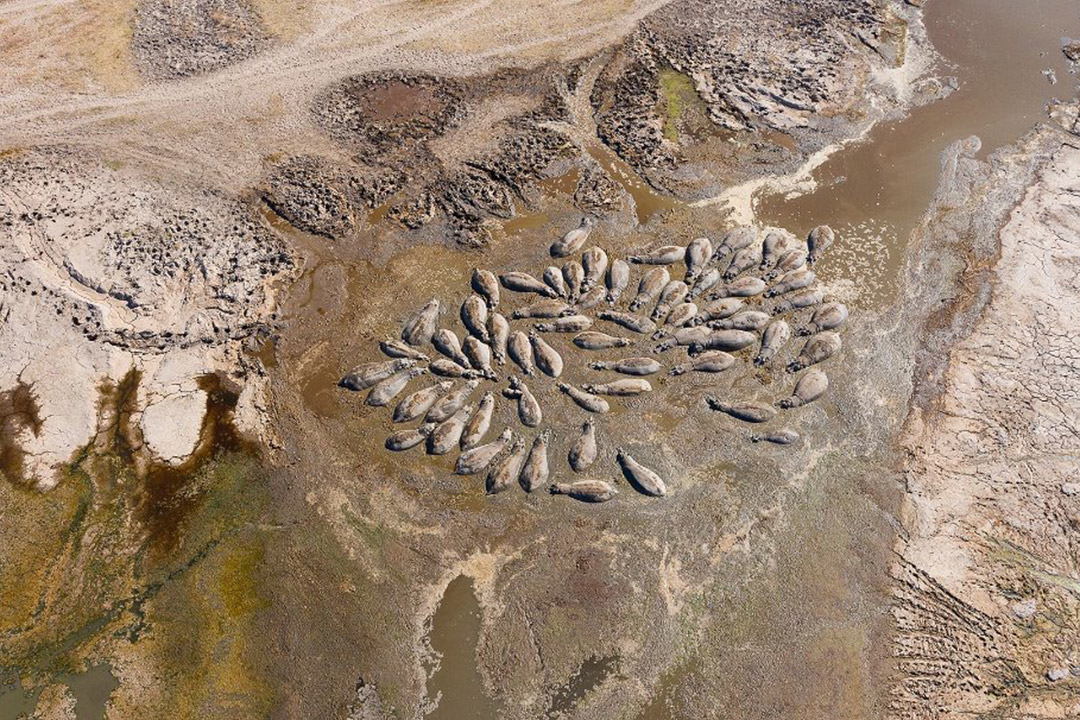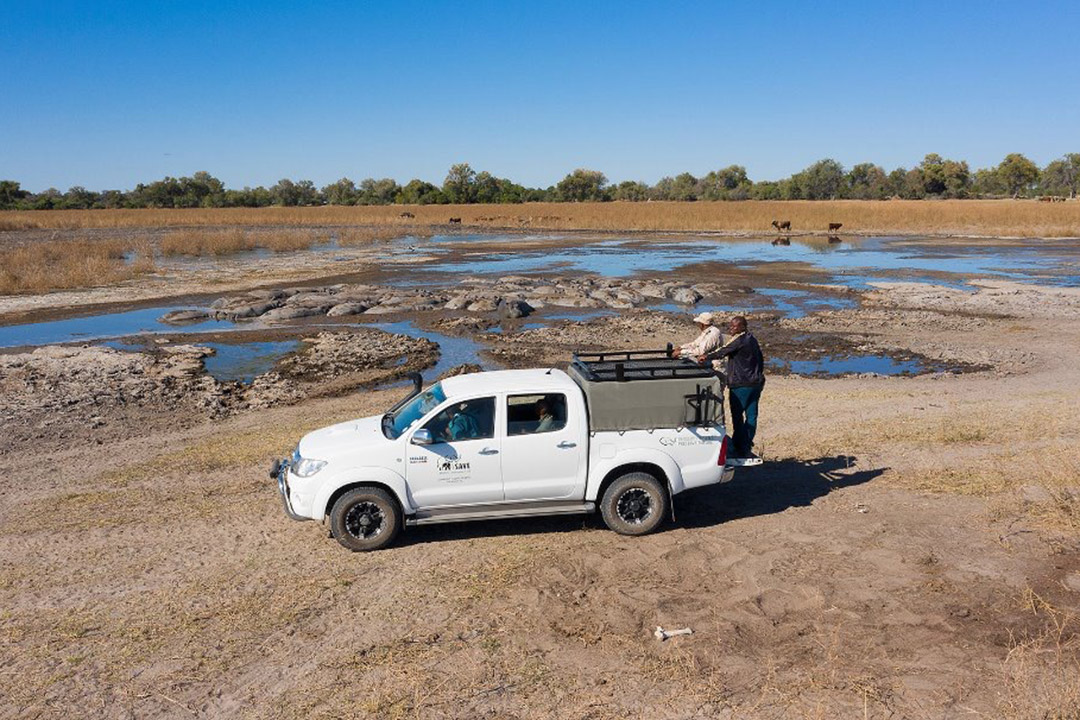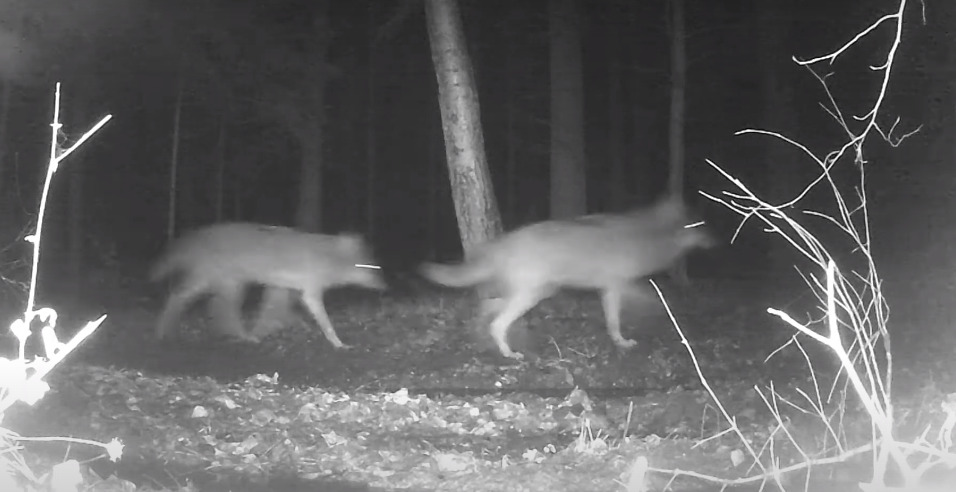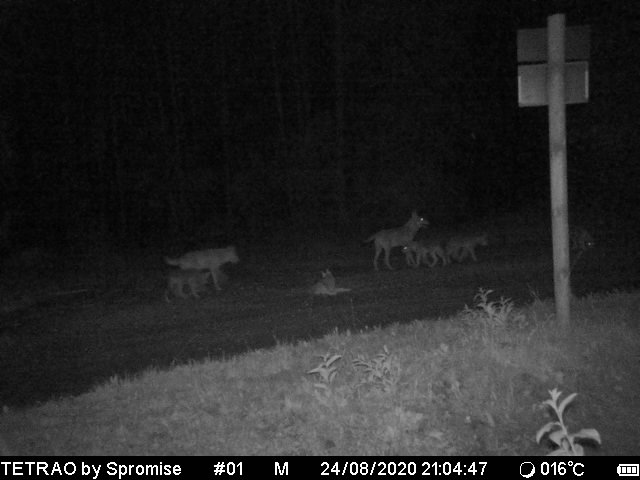Winter tracking east of S7
Winter tracking east of S7
Every winter, we look forward to snowfalls that would allow us to track wolves. January 2021 turned out to be favorable, and the snow cover allowed us to go out into the field. We tracked wolves in various parts of the Świętokrzyskie Province, and I was responsible for the area east of the S7 expressway, between Skarżysko and Starachowice. During the tracking, I was able to confirm the existence of 4 wolf families in this area. The number of individuals was similar to what we observed last year. In the Iłżecka Forest, I recorded 8 wolves, five in the Lipie complex, five as well in the Siekierczyńskie Forest, and four in the forests located east of Szydłowiec (Kierz Niedźwiedzi complex). During the tracking, I was able to confirm a heat in females from families from the Iłżecka Forest and the Lipie complex. We hope that the weather conditions will make it possible to continue tracking and complete the information about the families, which we monitor.
Jacek Major
Reportage from wolf tracking
She-wolf killed in a snare in the area of the Daleszyce Forest District
She-wolf killed in a snare in the area of the Daleszyce Forest District
On January 18, I was informed by an employee of the Daleszyce Forest District that a dead wolf had been found. Hunter hunting in that area found a body of a she-wolf with a steel rope on January 17 in a dense firry coppice near the town of Niwy Daleszyckie. Based on the information provided, the death of the wolf did not occur in the place where it was found. It was indicated by the severed line and no signs of she-wolf’s escape attempts.
The Daleszyce Forest District informed the Regional Directorate of Environmental Protection in Kielce about the incident and notified the Police Station in Daleszyce and the District Prosecutor’s Office in Kielce. On January 21, the veterinarian Marcin Mandziak conducted an autopsy, which I assisted. The post-mortem examination showed that the found dead wolf was a female at the age of 8 years, weighed 31 kg and had a good amount of fat. The veterinarian did not find the presence of parasites. During its lifetime, the predator was in good shape and condition. The probable sequence of death was hypoxia and impaired blood circulation caused by the cable being tightened on the animal’s neck. Indirectly, starvation and dehydration may have contributed to her death.
Tomasz Bracik

Damages by wolves in Podkarpacie in 2020
Damages by wolves in Podkarpacie in 2020
In the second half of 2020 (July 1 – December 31), there were 96 wolf attacks on farm and domestic animals. This is a 26.7% decrease compared to the second half of 2019 when there were 131 attacks. However, compared to the second half of 2018, it is a decrease of 21.95% (123 attacks). The most frequently attacked by wolves were sheep (65), cattle (11), horses (4), dogs (5), goats (4), and fallow deer and farm deer (12). As every year, wolves attacked dogs more often than our statistics show, but many of the aggrieved persons did not submit any claims to RDOŚ due to the inability to determine the value of not purebred dogs (not purchased in legal breeding).
In total, there were 143 attacks in the entire year 2020, which is a 22.7% decrease compared to 2019 (185) and a 19.2% decrease compared to 2018.
Hubert Fedyń, RDOŚ in Rzeszów
Bartek the Wanderer
Bartek the Wanderer
In the note from December 21, we mentioned that Bartek – a young male caught on November 30, 2020 – belongs to a wolf family living in the Świętokrzyska Forest. As it turned out, on December 22, Bartek went on a journey in search of a partner. He crossed the road no. 42 between Pięty and Odrowąż and came as far as Skłoby, a village west of Chlewiska. We have been recording the presence of wolves in this forest complex for many years, and we have managed to document the reproduction twice (family from Niekłański Forest). Bartek stayed in the vicinity of Skłoby for 5 days and then returned to his home territory. After one day of rest, he was on his way again. This time, he headed west. For several days he stayed in the forests south-east of Konskie. In this complex, we also recorded the reproduction of wolves – a family from the Black River Valley. On New Year’s Day, Bartek returned to the Świętokrzyska Forest again. This time he stayed there for 6 days and then set off to the northwest. However, he did not stop in the Niekłańskie Forests, but crossed the Przysucha-Końskie road and wandered through the Przysuskie Forests, to the edge of the Gielniów hump, in the vicinity of the town of Gielniów, from which the name of this geographical microregion is derived. In the Przysuskie Forests, where Bartek has been staying for 5 days, we have also been monitoring the presence of the wolf family for many years, and this year we have managed to document its reproduction. This type of dispersion of young wolves from the family pack is not unusual. In search of a reproductive partner, young individuals do not always leave the family and migrate in one direction. Quite often, dispersion is an exploration of the territories of neighboring families, after which wolves return – at least for some time – to their family. We will see what will happen this time – the family from the Świętokrzyska Forest currently has – without Bartek – at least 8 wolves.
Roman Gula
Bartek - a wolf from the Świętokrzyska Forest
Bartek - a wolf from the Świętokrzyska Forest
On Monday, November 30, we managed to catch the second wolf this year. This time it was a 4-year-old male. He weighed 37 kg and was in good shape. The tracks around the trapping site indicated that the wolf was not alone. Several other individuals accompanied him. A trail in the snow indicated that one of them was lying a few meters from the captured wolf. After putting on the telemetry collar, the wolf woke up quickly, left and hid in a nearby coppice. After a dozen or so hours, he started patrolling the Świętokrzyska Forest. We suspect that he has already joined his family, but we are unsure because of the lack of snow cover. We named him Bartek, in honor of the oldest oak in Poland, growing on the southern edge of the Świętokrzyska Forest.
Text: Roman Gula and Artur Milanowski. Photo report: Jacek Major
A reportage from catching Bartek - a wolf from the Świętokrzyska Forest
168 hippos saved!
168 hippos saved!
We are thanking our donors for the support in saving 168 hippos, which got stuck looking for water during the huge drought in 2019.
We were able to equip a borehole with a pump, dig a trench and install solar panels. This provided water to the hippos during the time of draught. They were also fed with bales of Lucerne. The bales were bought so that they can gain energy and be able to stretch and walk out of water, it was a bonus to them.
The Hippos at the Nxaraga Hippo pool also smiled to the flooding of the Thamalakane river as this meant more water and free movement with the river channel.
Now that the river has flooded, and hippos have migrated, the borehole has been disconnected and the equipment shall be used by the Nxaraga community for future projects. A successful project completed due to your tremendous support!
Wolf's supper with home delivery - a unique film from Lower Silesian Forest
Wolf's supper with home delivery - a unique film from Lower Silesian Forest
It’s a warm August night. Wolf pups from the pack in the Świętoszów Forest District in Bory Dolnośląskie are already quite grown up and do not require constant adult care. However, they are not yet able to accompany adult wolves during hunting. They patiently await the return of their parents and older siblings to rendez-vous – the place of rest and gathering of the wolf family. Tired of waiting, they fell asleep on the forest road overgrown with grass.
Finally, after midnight, the long-awaited howl of adults can be heard in the distance. This is a signal that the rest of the wolf family have returned from hunting and intend to share the prey. The young wolves respond eagerly – their howl quickly turns into a desperate howl, which means, more or less, “I’m about to starve.” Finally, an adult wolf appears, and one of the pups crawls towards him, showing submission with his body. It reaches the parent’s mouth and begins to ask for food, licking it insistently. Licking the mouth is a stimulus for wolves (and many other dogs) that causes regurgitation, i.e. vomiting the previously eaten food. It is a very practical solution that allows you to transport food for pups even over long distances – adult wolves can hunt up to 10 km from rendez-vous. Interestingly, wolves are able to dose the amount of returned food, and thus, they can distribute them to all pups.
The pup finally gets his way and receives a portion of nutritious, already digested food, probably roe deer or deer. After thoroughly licking the leftovers, the pup moves away in search of the rest of the adults – maybe there is something left in someone’s stomach?
You can see the described scenes on the video , which was recorded by the Institute of Nature Conservation of the Polish Academy of Sciences as part of the project of the Regional Directorate for Environmental Protection in Wrocław “Wolf monitoring in the Natura 2000 areas Dolina Dolnej Kwisa PLH020050, Wrzosowisko Przemkowskie PLH020015 and Wrzosowiska Świętoszowsko-Ławszowskie PLH020063” [“Monitoring wilka w obszarach Natura 2000 Dolina Dolnej Kwisy PLH020050, Wrzosowisko Przemkowskie PLH020015 i Wrzosowiska Świętoszowsko-Ławszowskie PLH020063”]. As part of this project, since the beginning of 2020, we monitored four wolf families in Bory Dolnośląskie.
Katarzyna Bojarska
A unique film recorded in Bory Dolnośląskie - howling pups, a pup "begging" for food and an adult wolf vomiting food for a pup
Seven wolves from Lipie
Seven wolves from Lipie
In the note from October 7, we wrote about the wolves from the Lipie complex. Four adult wolves and two already grown pups born this year were recorded in our photo-traps. The cyclical monitoring of the routes through which wolves move across their territory has given us another, more accurate picture of the number of individuals in this family. On October 28, the photo-trap registered as many as 7 individuals in the Lipie complex. The short film shows – we hope – the whole family. However, it should be remembered that wolves from the same family do not always roam together, which is one reason why it is so difficult to count them.
Jacek Major
Wolves from the Lipie family - video
New information about wolves from Lipie
New information about wolves from Lipie
We have been monitoring wolves in the Lipie forest complex for several years, between Starachowice and Skarżysko-Kamienna. According to the information received from foresters, the first wolves appeared in this area about 9 years ago. In the spring of this year, we were able to confirm wolves’ presence in this complex for the first time (note from April 17), and in the summer prove their reproduction (notes from July 15 and August 27). On October 5, after a periodic inspection of the area and collecting cards from photo-traps, it turned out that the Leipzig family now consists of 6 individuals – 2 this year’s pups and 4 adult individuals. In the video that I assembled from the photo-trap material, you can see adult wolves and pups that are as tall as adults, but in the “soul” they are still “kids”. They like to play – in this case, with our photo trap, which luckily they did not destroy.
Two days later, about 2.5 km from the place where the photo trap registered 6 individuals, a group of 5 individuals was recorded: 4 adults and one this-year’s pup.
Jacek Major
A family of wolves from the Lipie forest complex - video
Pups in Przysuskie Forests
Pups in Przysuskie Forests
We have been recording the presence of wolves in the Przysuskie Forests since 2013, but so far, we have not been able to confirm the breeding of wolves in this area. During the winters, we systematically recorded the tracks of wolves (max. 4), and in the summer, adult wolves responded to our howls – in 2014, as many as 3 individuals simultaneously. However, we have never heard pups howling. It was similar this year. During our visits to the Przysuskie Forests, we found scats and tracks, but this year wolves did not respond to our howls. We managed to obtain interesting information from the employees of the State Forests. In July, one of the foresters met 3 pups on one of the forest roads. The pups were also recorded in the photo-trap of the Barycz Forest District. The photo shows for sure 4 pups and two adult wolves. The seventh wolf – lying on the road – may also be a pup. Either way, it looks like the wolf family from Przysuskie Forests is doing well.
Roman Gula and Artur Milanowski

